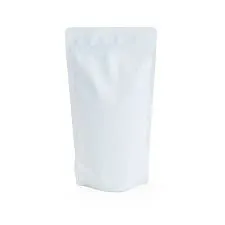- Afrikaans
- Albanian
- Amharic
- Arabic
- Armenian
- Azerbaijani
- Basque
- Belarusian
- Bengali
- Bosnian
- Bulgarian
- Catalan
- Cebuano
- chinese_simplified
- chinese_traditional
- Corsican
- Croatian
- Czech
- Danish
- Dutch
- English
- Esperanto
- Estonian
- Finnish
- French
- Frisian
- Galician
- Georgian
- German
- Greek
- Gujarati
- haitian_creole
- hausa
- hawaiian
- Hebrew
- Hindi
- Miao
- Hungarian
- Icelandic
- igbo
- Indonesian
- irish
- Italian
- Japanese
- Javanese
- Kannada
- kazakh
- Khmer
- Rwandese
- Korean
- Kurdish
- Kyrgyz
- Lao
- Latin
- Latvian
- Lithuanian
- Luxembourgish
- Macedonian
- Malgashi
- Malay
- Malayalam
- Maltese
- Maori
- Marathi
- Mongolian
- Myanmar
- Nepali
- Norwegian
- Norwegian
- Occitan
- Pashto
- Persian
- Polish
- Portuguese
- Punjabi
- Romanian
- Russian
- Samoan
- scottish-gaelic
- Serbian
- Sesotho
- Shona
- Sindhi
- Sinhala
- Slovak
- Slovenian
- Somali
- Spanish
- Sundanese
- Swahili
- Swedish
- Tagalog
- Tajik
- Tamil
- Tatar
- Telugu
- Thai
- Turkish
- Turkmen
- Ukrainian
- Urdu
- Uighur
- Uzbek
- Vietnamese
- Welsh
- Bantu
- Yiddish
- Yoruba
- Zulu
freeze dry fruit at home
Freeze Drying Fruit at Home A Comprehensive Guide
In recent years, the trend of preserving food has gained significant momentum, particularly for those who like to maintain a healthy lifestyle while minimizing food waste. One of the most effective methods of food preservation is freeze drying, which dramatically enhances the shelf life of fruits without sacrificing their nutritional value or taste. In this article, we will explore the process of freeze drying fruit at home, the essential equipment required, and the benefits of this preservation method.
What is Freeze Drying?
Freeze drying, or lyophilization, is a method of removing moisture from food through a process that involves freezing and subsequently evacuating the water from ice to vapor. This technique is widely used in the pharmaceutical and food industries and has garnered attention for home use due to its practicality and effectiveness in preserving fruits. When done correctly, freeze-dried fruits can retain up to 97% of their nutrients, making them an exceptional snack or ingredient for various culinary endeavors.
What You Need
While commercial freeze-drying machines can be quite expensive, there are alternative methods that can be implemented at home. Here’s a list of essential equipment and ingredients to get you started
1. Freezer A standard kitchen freezer is the first and most crucial tool for freeze drying at home. If you have a chest freezer, even better, as it can maintain low temperatures more efficiently.
3. Dehydrator (Optional) For those who don’t have a freeze dryer, a food dehydrator can effectively remove remaining moisture after the freezing process.
4. Vacuum Sealer (Optional) To maintain the freshness of your freeze-dried fruits, consider investing in a vacuum sealer or using airtight containers.
freeze dry fruit at home

5. Fruits Select your favorite fruits, such as strawberries, blueberries, bananas, apples, or peaches. Look for ripe and high-quality produce for the best results.
The Freeze Drying Process
1. Preparation Begin by washing and slicing your fruits into uniform pieces. This ensures even freeze drying and can also aid in quicker drying times. Remove any seeds or inedible skins, if necessary.
2. Freezing Arrange the sliced fruits in a single layer on a baking sheet and place them in the freezer. It’s important to allow the fruits to freeze solidly for at least 24 hours. This step is crucial as it ensures that all moisture is fully frozen before the drying process begins.
3. Vacuum Sealing (Optional) If you have a vacuum sealer, seal your frozen fruits for further protection against moisture during the drying process.
4. Drying If you own a freeze dryer, follow the manufacturer’s instructions for the best results. If not, utilize your oven or dehydrator. Set your oven to the lowest possible temperature (typically around 140°F or 60°C) and leave the door slightly ajar to allow moisture to escape. Alternatively, place the fruit in a dehydrator and set it to fruit mode. The process can take anywhere from 6 to 12 hours, depending on your equipment and the type of fruit.
5. Storage Once the fruits are crispy and devoid of moisture, allow them to cool, then store them in airtight containers or vacuum-sealed bags. Keep them in a cool, dark place to maximize their shelf life.
Conclusion
Freeze drying fruits at home is a rewarding and practical skill that can enhance your kitchen and pantry while contributing to healthy eating habits. Whether you’re using a countertop freeze dryer, a conventional freezer and oven, or a dehydrator, the process is accessible and can yield delicious, nutrient-rich snacks. By following these steps, you can create a stash of freeze-dried fruits that can be enjoyed for months to come, making it an excellent addition to your food preservation techniques. Embrace the art of freeze drying and savor nature’s sweetness all year round!













